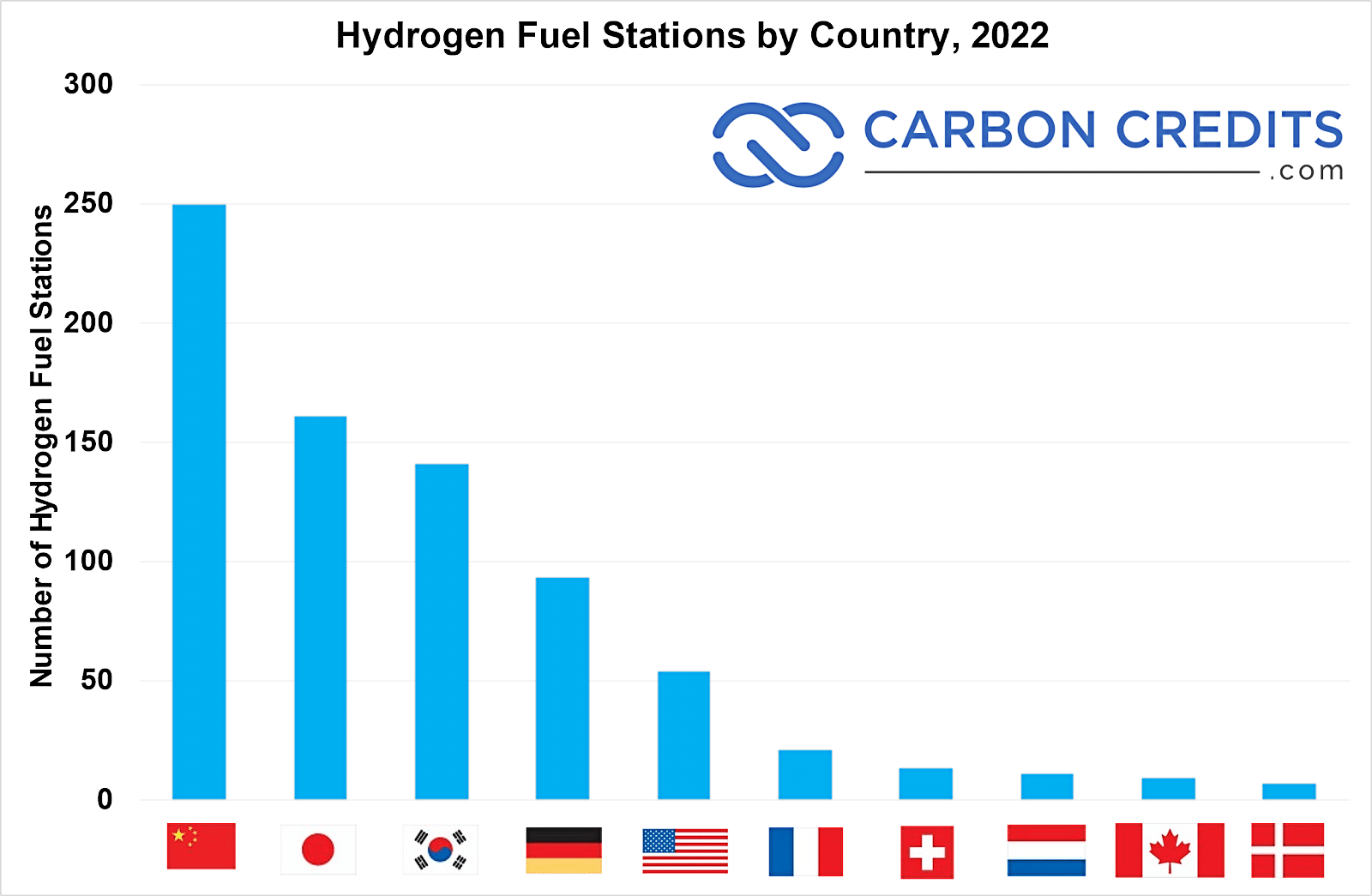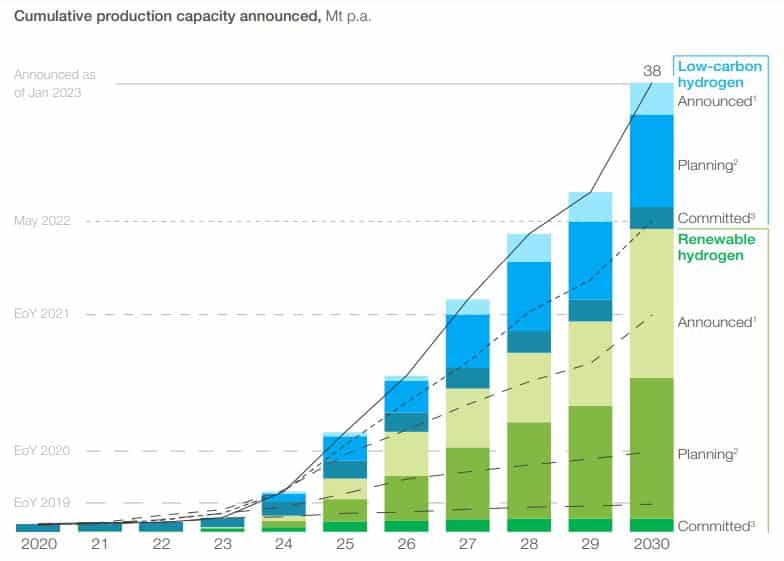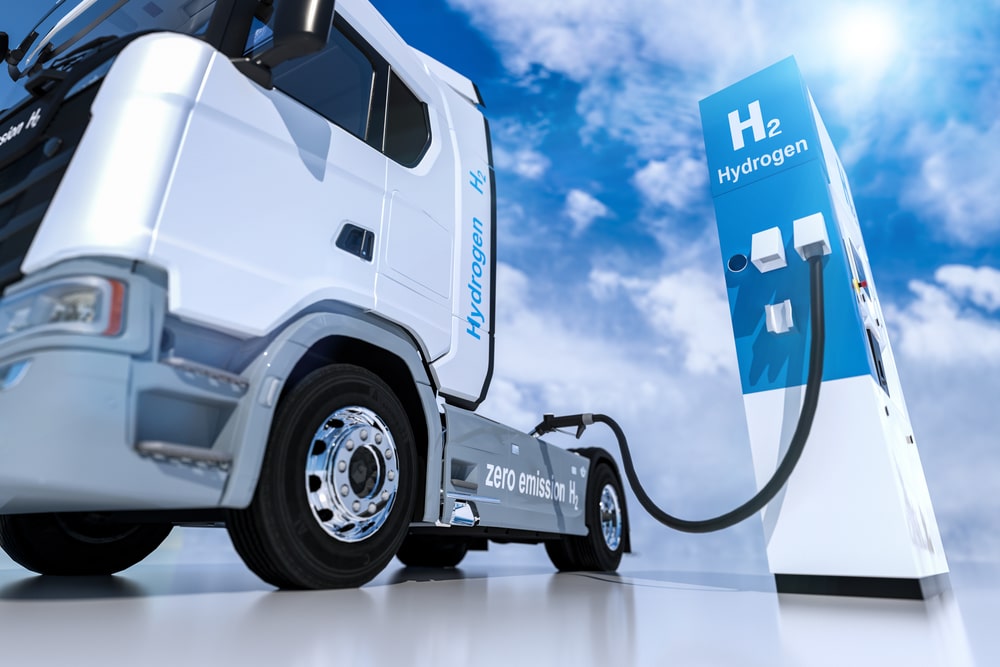In the realm of long-haul trucking, a technological crossroads has emerged: the divide between hydrogen-powered and battery-electric trucks. As the industry grapples with stringent emissions regulations, particularly in California, truckers are starting to embrace hydrogen for zero-emission technology.
Companies like Nikola and traditional manufacturers are investing in hydrogen technology, aiming to overcome infrastructure challenges and meet growing demand.
The Shift to Hydrogen-Powered Trucks
Many truckers are shifting focus towards electric technology adapted for 18-wheelers. But there’s a clear divide between those favoring battery-cell rigs commonly used in electric cars and those considering hydrogen as the best solution for zero-emission technology, particularly for long-haul trips.
Supporters of hydrogen believe it offers advantages for long trips and quicker refueling compared to battery technology. Hydrogen trucks can carry heavier loads since they don’t require large batteries.
However, hydrogen fuel cell vehicle, also called FCEV, and infrastructure are not as developed as battery-electric trucks, and strict regulations are pressuring truck operators.
Starting January 1, California will mandate that trucks visiting the state’s seaports be zero-emission vehicles. The state also plans to increase the use of clean fuels, aiming to phase out diesel over the next decades.
These stringent rules on diesel trucks are among the toughest in the country, and other states might adopt similar regulations based on California’s lead.
The upcoming regulations have caused a surge in diesel truck purchases as carriers seek to expand their fleets before the restrictions come into effect. Truckers are also investing in zero-emission vehicles, although they come at a high cost, almost triple a diesel truck’s price.
These purchases are supported by grants from California and local agencies but hinge on the promise of future infrastructure development.
Battery-electric trucks are already in operation in California, with over a dozen companies transporting freight using these vehicles. However, hydrogen-powered trucks are just starting to enter the market in the state, and hydrogen-fueling stations are lagging behind battery-electric infrastructure.
Globally, China has the most hydrogen fuel network at around 250 while the U.S. only has a little over 50 stations, mostly in California.

Truckers find battery-electric trucks suitable for short trips between ports, rail yards, and warehouses. Yet, for longer journeys of 100 miles or more, they consider these trucks less practical due to limited battery range and lengthy recharging times.
Currently, battery-electric heavy-duty trucks can travel around 300 miles and take hours to recharge. Some truckers report getting just over 150 miles between charges.
In contrast, hydrogen trucks boast a range of up to 500 miles and refuel in about 30 minutes. They are also lighter than battery-electric rigs, enabling heavier loads.
While Nikola leads in hydrogen-truck technology, traditional manufacturers like Kenworth, Hyundai Motor, and Volvo Trucks are also working on developing hydrogen fuel-cell big rigs.
In July, Nikola received a $41.9 million grant under the Trade Corridor Enhancement Program (TCEP) to build 6 heavy-duty hydrogen refueling stations across Southern California through its HYLA brand.
Each hydrogen refueling station is designed to support and scale up the growth of heavy-duty commercial hydrogen refueling needs. Nikola also reached a milestone of sales orders for its hydrogen fuel cell electric trucks, reflecting a growing industry trend.
Hydrogen Holds The Promise of a Sustainable Energy
Napa-based trucking firm Biagi Bros recently trialed a hydrogen-powered Nikola truck for two months. Gregg Stumbaugh, their corporate equipment director, noted that due to the truck’s extended range and rapid refueling, their drivers accomplished twice the work compared to battery-electric trucks.
California’s regulations mandate that 10% of Biagi Bros’ 230-truck fleet must be emission-free by 2027. Stumbaugh expects most of their zero-emission trucks bought before then, including the upcoming 10 Nikola trucks to be run by hydrogen fuel.
He emphasized the quick refueling time as a significant advantage over battery-electric options.
Nikola’s CEO, Steve Girsky, aims to establish nine public fueling sites in California by mid-2024, a combination of the company’s HYLA brand and third-party providers.
They’re collaborating with Voltera to set up 50 Hyla hydrogen-fueling stations across key trucking routes in the next five years. Their goal is to “make sure there’s a supply of hydrogen everywhere there’s customers”, said Nikola’s CEO Steve Girsky.
While hydrogen refueling is faster, it remains expensive due to the limited fuel market.
Hyzon Motors‘ CEO, Parker Meeks, mentioned hydrogen’s cost being 2-4x higher per gallon than diesel. But as hydrogen becomes more prevalent, its price would decline in the next 3 years.
Meanwhile, McKinsey & Company estimated that the total hydrogen production capacity announced by companies by 2030 rose by 40% as shown below.

For Tennessee-based IMC, investing in hydrogen trucks is a necessity. The company operates regular round trips of about 300 miles between ports and warehouses. These are areas where battery-electric vehicles fall short due to range limitations.
The adoption of hydrogen-powered trucks in California is still in its initial stages. And hydrogen-fueling stations lag significantly behind those supporting battery-electric vehicles.
However, as the recent developments in the hydrogen market show, a revolution is unfolding where hydrogen seems to hold the promise of a sustainable energy transition.

